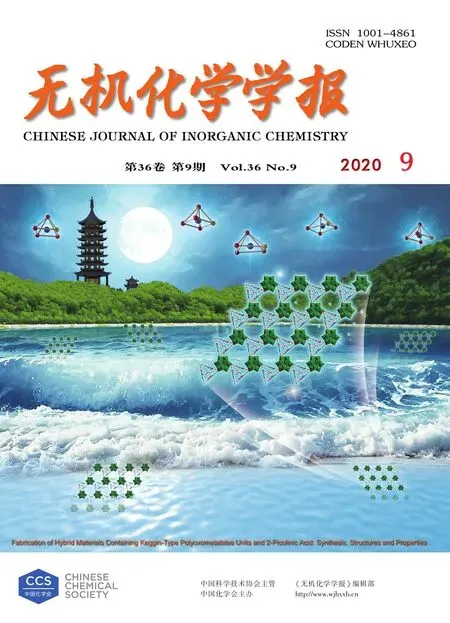吡啶类单核钴(Ⅱ)配合物的合成、结构、与DNA的相互作用及细胞毒性
2020-09-10高春艳乔佩佩杨皇泽张鹏飞雷云博张永坡岳爱琴赵晋忠杜维俊
高春艳 乔佩佩 杨皇泽 张鹏飞 雷云博张永坡 王 敏 岳爱琴 赵晋忠 杜维俊*,
(1山西农业大学基础部,晋中 030801)
(2山西农业大学农学院,晋中 030801)
0 Introduction
DNA,the deoxyribonucleotide,is a major component of chromosomes and plays an important role in the translation,transcription and replication of the genetic code of life.Also,DNA is an important target molecule for many antitumor drugsin vivo[1].In recent years,the interaction of small molecule transition metal complexes with DNA and its chemical nuclease activity has become a hot spot in bioinorganic chemistry research.Transition metal complexes have been widely used as DNA structure probes,DNA molecular light switches,DNA breaking agent and anticancer drugs[2-5].In order to further explore the reaction mechanism of metal complexes and DNA interaction,people used copper,iron,zinc,ruthenium and other metals to synthesize a large number of metal complexes for research[6-9].Spectroscopic studies suggest that there exists an interaction between acyclic copper complex of Cu(L)(H2O)and DNA[10].The dipyridine copper complexes with guanidine/amine side chains discovered by Ji Liang-Nian et al.can hydrolyze superhelix DNA and obtain linear products at the same time[11].The ruthenium(Ⅱ)polypyridine complexes can intercalate into DNA base pairs,and it is found that single oxygen(1O2)is likely to be the ROS(reactive oxygen species)for catalytic cleavage[12].The zinc(Ⅱ)complex containing guanidine thiosemicarbazide shows that it has certain anti-tumor cell proliferationin vitrofor lung cancer cells(A549)and breast cancer cells(MCF7)through cytotoxicity experiments and its action may be combined into cell DNA by partial insertion[13].
Cobalt is an essential trace element found in all animals.Cobalt plays a crucial role in several biologically important processes,and is predominately found in the form of vitamin B12(cobalamin).Many biological enzymes rely on the reaction of cobalt to stimulate their activity,so as to complete the catalytic effect on the metabolic process in the organism.The different forms of cobalamin are necessary for proper formation of red blood cells,DNA synthesis and regulation,and the maintenance of normal brain and nerve function.There is also evidence implicating cobalamin in fatty acid and amino acid metabolism.Given the prominent role of cobalt in biological processes,humans have evolved mechanisms to overcome cobalt overload.Cobalt is thus less toxic to humans than non-essential metals like platinum[14-16].Therefore,the study of cobalt complexes is of great significance in pharmacology,coordination chemistry and bioinorganic chemistry
Herein,we synthesized a new cobalt complex and confirmed the crystal structure by X-ray single crystal diffractometer;further characterized the complex by infrared spectroscopy and elemental analysis;and interaction between the complex and CT-DNA were studied by electron absorption spectroscopy and fluorescence spectroscopy.The cleavage effect of the complex on the plasmid pBR322 DNA and its mechanism were studied by agarose gel electrophoresis.It provides preliminary work basis for the synthesis of chemical nucleases with DNA site-specific recognition and localization cleavage.Moreover,MTT method was used to determine the inhibitory effect of the complex on the growth of tumor cellsin vitro.
1 Experimental
1.1 Instruments and reagents
Elemental analysis(C,H,N)was conducted with a PerkinElmer 240Q elemental analyzer.IR spectra were obtained on a Bruker TENOR 27 Fourier transform infrared spectrometer.Electronic spectra were measured on a JASCO V-570 spectrophotometer.Fluorescence spectrum was measured with a Cary Eclipse fluorescence spectrometer.The electrophoresis experiment was performed with constant pressure DYY-Ⅲelectrometer,and the gel imaging experiment was performed with UVITEC gel automatic imaging analysis system.
All reagents and solvents were purchased from commercial sources.The complex was soluble in H2ODMF mixed solvent,0.01 mol·L-1in 10%(V/V)DMF/H2O of the stock solution was stored at 4℃and prepared to required concentrations for the chemical nuclease and bioactivity experiments.Tris,EDTA,DMSO,NaCl and H3BO3used in biological activity experiments are guarantee reagents.Calf thymus DNA(CT-DNA)(BR)was produced by Fluka company.PBR322 DNA(BR)was purchased from Fermentas;ethidium bromide(EB)(AR)and agarose were Sigma-Aldrich products.Fetal bovine serum,RPMI1640,DMEM,and MTT were purchased from Solarbio.
1.2 Synthesis of[Co(L)Cl2](1)
The synthesis and characterization of ligand L(4-methyl-N,N-bis(pyridin-2-ylmethyl)aniline)refer to published literature[17-18].The ligand(0.2 mmol)was dissolved in 10 mL methanol and stirred.At the same time,0.2 mmolN,N-diethyl-ethylamine was added dropwise.After stirring at room temperature for 30 min,10 mL CoCl2·6H2O(0.2 mmol,26 mg)ethanol solution was slowly added,and the stirring was continued at room temperature for 5h.Then the mixture was filtered.The filtrate was allowed to stand at room temperature for one week until blue crystals suitable for X-ray collection was obtained.The excess solution was filtered,washed with ether,and dried in air.Yield:38%.Element analysis Calcd.for C19H19Cl2CoN3(%):C,54.44;H,4.57;N,10.02.Found(%):C,54.49;H,4.61;N,9.99.FT-IR(KBr,cm-1):3 428,3 068,2 918,1 608,1 516,1 482,1 446,1 310,1 266,1 191,1 056,1 025,858,816,776,650.
1.3 X-ray crystallography
The crystal with suitable size(0.4 mm×0.25 mm×0.2 mm)was selected for X-ray single crystal diffraction.X-ray diffraction data were collected on Bruker Smart 1000 CCD diffractometer using MoKαradiation(λ=0.071 073 nm)withω-2θscan mode at 293(2)K[19].The intensity data was corrected by the SADABS program.The crystal structure was obtained by direct method,and the full matrix least squares correction was performed on all non-hydrogen atoms by anisotropic thermal parameter method.Hydrogen atoms were added by geometric theoretical hydrogenation procedures.All calculations were done using the SHELXS-97 and SHELXL-97 programs[20-21].Crystallographic data details and structure refinement parameters are presented in Table 1.Selected bond lengths and angles are listed in Table S1(Supporting information).
CCDC:1966237.

Table 1 Crystallographic data for complex 1
1.4 DNA binding,DNA cleavage and cytotoxicity experiments
The chemical nuclease activity(absorption spectroscopic assay,fluorescence spectrum assayand pBR322 DNA cleavage activity)and cytotoxicity experiments were conducted using the similar methods described previously[17-18,23].For complete experimental methods see the Supporting information.
2 Results and discussion
2.1 Description of crystal structure of 1
The crystal structure of complex belongs to the monoclinic system,P21/nspace group.The crystal analysis results show that the basic unit of the mononuclear cobalt complex is composed of a neutral[Co(L)Cl2]molecule.As shown in Fig.1,the Co center of the complex shows a penta-coordinated geometry with N3Cl2donor sets(a tertiary amine N atom,two pyridine N atoms,and two Cl atoms).τ=0.80[22],therefore the coordination center can be described as a trigonalbipyramidal configuration.Two pyridine N atoms(N2 and N3)and one Cl1 atom occupy the triangular plane position,while the other Cl2 atom and N1 occupy the axial position.
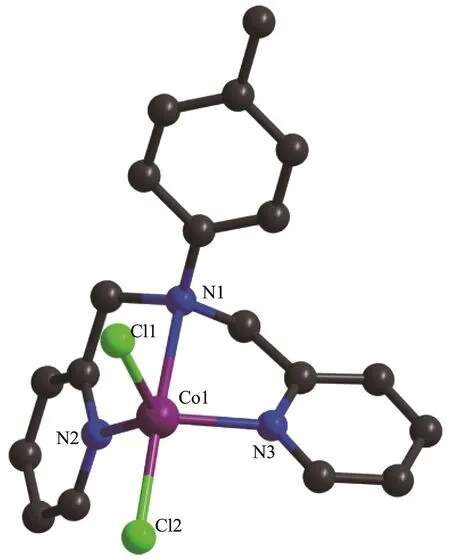
Fig.1 X-ray crystal structure of complex 1
2.2 DNA-binding studies
The electronic absorption spectrum of the complex interacted with DNA and its corresponding fitting data are shown in Fig.2a.The observed intense UV absorption peak at 210 nm for the complex are assigned to theπ-π*transition of intraligand.With the gradual addition of CT-DNA,the absorption peak can cause hypochromic effect and a little red shift(7 nm).It can be considered that the complex had an insertion effect with CT-DNA.In order to quantify the insertion capacity of the complex and CT-DNA,the binding constantKbof interaction of the complex with DNA has been calculated according to the formulacDNA/(εa-εf)=cDNA/(εb-εf)+1/[Kb(εb-εf)][23].The relative calculating results are shown in Table S2,and the value ofKbwas 9.03×104L·mol-1,which suggests that the binding strength of the complex to DNA is moderate.
As a means for further explore the interaction of the complex with DNA,fluorescence spectra measurements were performed on CT-DNA by varying the concentration of the complex.We used ethidium bromide(EB)as a fluorescent probe and evaluated the binding tendency of the complex to CT-DNA.Fig.2b shows the fluorescence intensity of EB-DNA gradually decreases with the gradual addition of complex,which indicates that the complex can compete with EB to bind DNA.In order to quantitatively calculate the binding capacity to DNA,a straight line should be obtained by plotting the concentration of the quencher withI0/Iaccording to the classical fluorescence quenching theory(I0andIrepresent the fluorescence intensities in the absence and presence of quencher,respectively).According to the Stern-Volmer equation[24],I0/I(the ratio of the fluorescence intensity of EB-DNA before and after the addition of the complex)was plotted on the ordinate and the concentration of the complex was taken as the horizon-tal coordinate.According to the equationKEBcEB=Kappccomplex,KEB=1.0×107L·mol-1(cEB=2.4 μmol·L-1),theKappof the complex was calculated to be 7.12×105L·mol-1,which was smaller than the classical bonding constant 107L·mol-1[25].The results showed that the interaction between the complex and DNA is a medium intercalative mode.It is consistent with the results of electron spectroscopy.
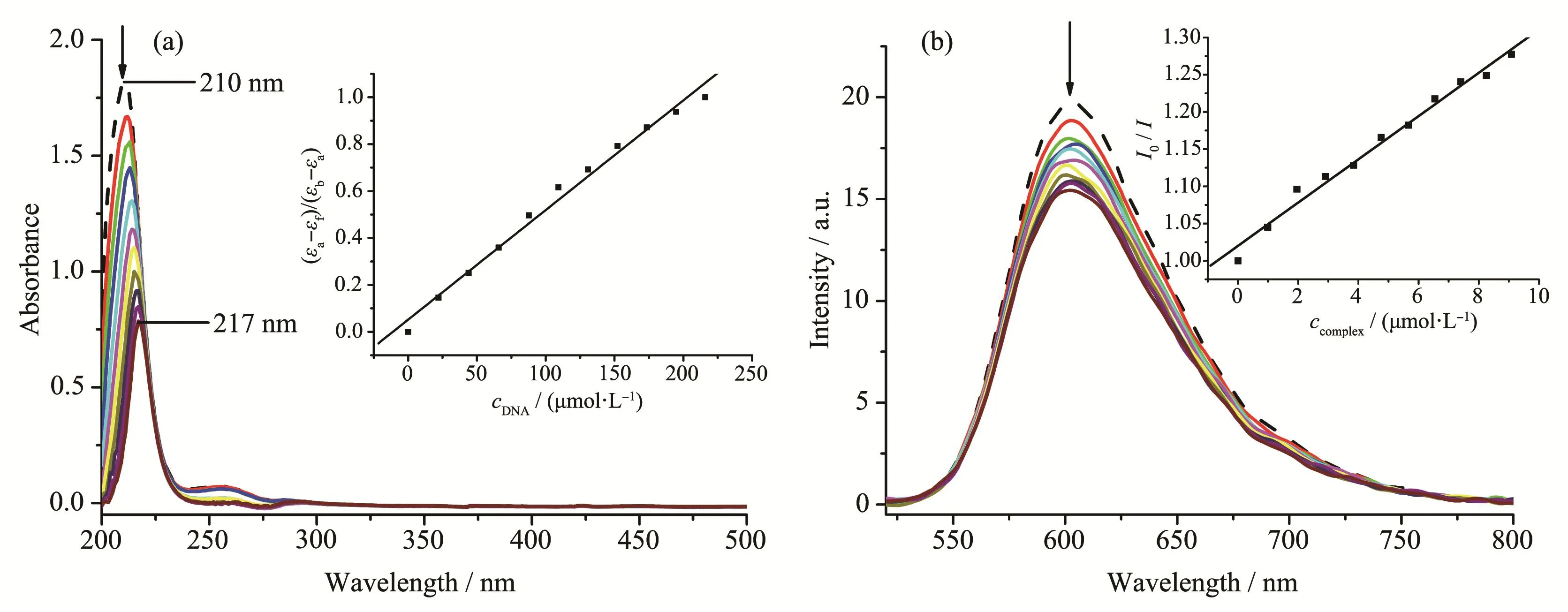
Fig.2 (a)Absorption spectra of complex 1(2.44 μmol·L-1)in the absence(dashed line)and presence(solid line)of increasing amounts of CT-DNA(22,44,66,88,109,131,152,174,195 and 216 μmol·L-1)in 5 mmol·L-1 Tris-HCl/50 mmol·L-1NaCl buffer(pH=7.2);(b)Fluorescence emission spectra of EB(2.4 μmol·L-1)bound to CT-DNA(48 μmol·L-1)system in the absence(dashed line)and presence(solid lines)of complex 1(0.99,1.96,2.91,3.84,4.76,5.66,6.54,7.41,8.26 and 9.09 μmol·L-1)
2.3 DNA cleavage studies
2.3.1 Concentration-dependent DNA cleavage activity without any inducer
The covalent closed-loop supercoiled plasmid DNA(SC DNA)is commonly referred to as FormⅠ,the open-loop nicked DNA(NC DNA)produced by single-strand cleavage is called FormⅡ,and the linear DNA(LC DNA)produced by double-strand cleavage is called FormⅢ[26].In the absence of external agent,the concentration-dependent DNA cleavage activity was performed under the nearly physiological conditions(pH=7.2,37℃,3 h).The extent of DNA cleavage was estimated by the histogram distribution according to the corresponding gel electrophoresis diagram,which is shown in Fig.3.The distribution of FormⅠ(SC DNA)gradually reduced and that of FormⅡ(NC DNA)increased with the increasing concentration of the complex.The complex 1 concentration of 0.65 mmol·L-1(Lane 5)could make DNA produce about 55% of FormⅡ.It is demonstrated that the Co(Ⅱ)complex shows certain concentration-dependent DNA cleavage activity without any external agent.

Fig.3 Histogram for cleavage of pBR322 DNA(0.1 μg·μL-1)with complex 1 in the absence of inducer
2.3.2 Concentration-dependent DNA cleavage activity with H2O2as inducer
To further assess the chemical nuclease activity of complex,the concentration-dependent DNA cleavage experiment by complex was also performed in the presence of H2O2under the same physiological conditions(pH=7.2,37℃,3 h).As shown in Fig.4,the distribution of FormⅠ gradually reduced and FormⅡincreased as the concentration changed(0.005~0.05 mmol·L-1).It is worth to mention that the complex could generate about 70% FormⅡfrom supercoiled plasmid DNA in the presence of H2O2at 0.05 mmol·L-1concentration(Lane 5),while the complex could not induce obvious DNA cleavage without any external agent at the same concentration(Fig.3,Lane 1).The result shows that the DNA cleavage efficiency of complex exhibits remarkable increase due to the addition of H2O2.
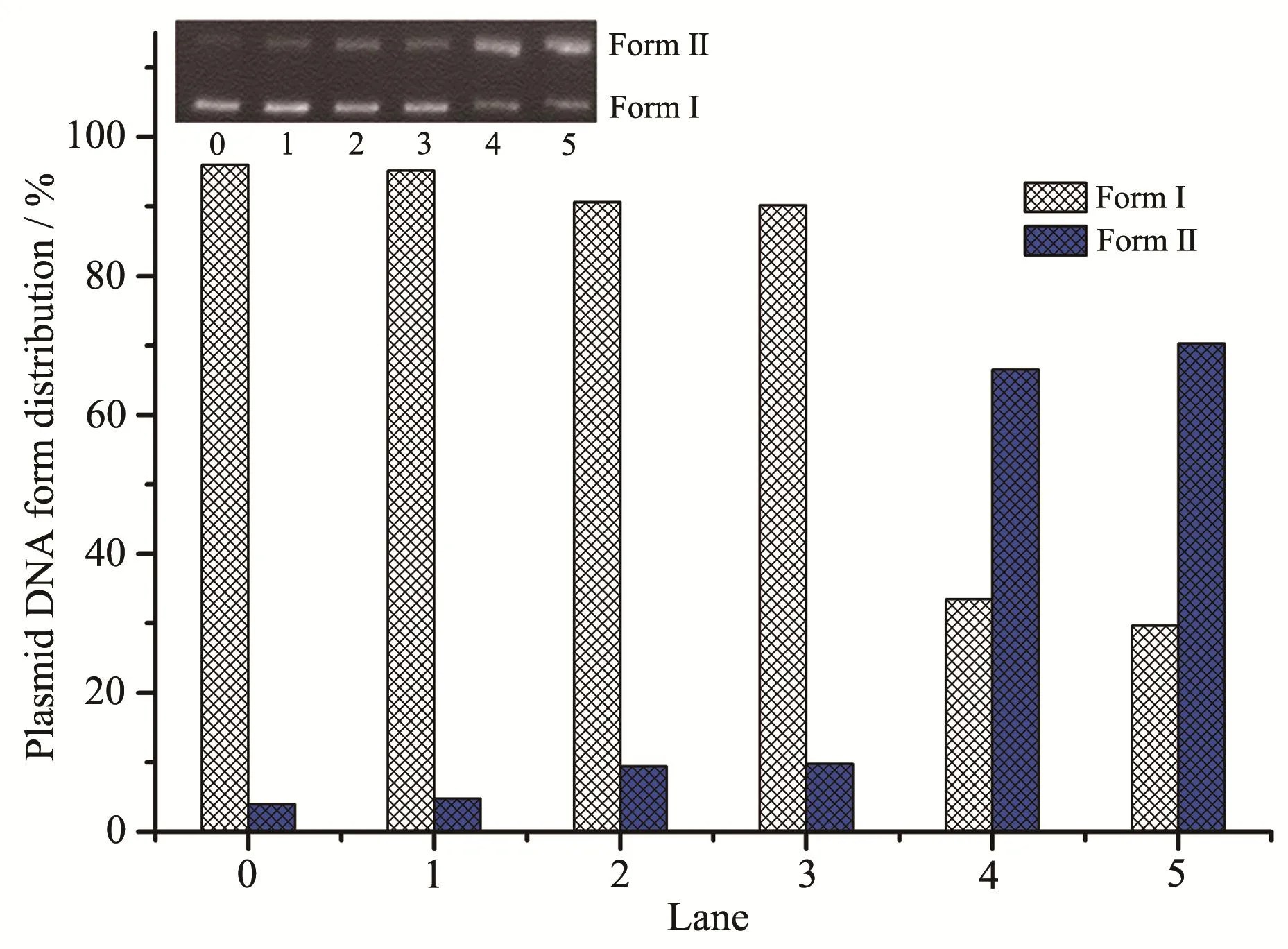
Fig.4 Histogram for cleavage of pBR322 DNA(0.1 μg·μL-1)with complex 1 in the presence of inducer(H2O2)
2.3.3 Mechanism of DNA cleavage
In order to further explore the active oxygen species(ROS)which was responsible for the DNA cleav-age,we have studied several possible inhibitors under aerobic conditions:NaN3as singletoxygen (1O2)quencher,KI as hydroxyl radical scavenger(·OH),superoxide dismutase(SOD)as O2-radical scavenger,catalase as hydrogen peroxide scavenger and EDTA as the chelator of complex.In order to study the binding sites of complex and DNA interactions,we added small groove and large groove binding reagents such as SYBR green and methyl green[27-28].
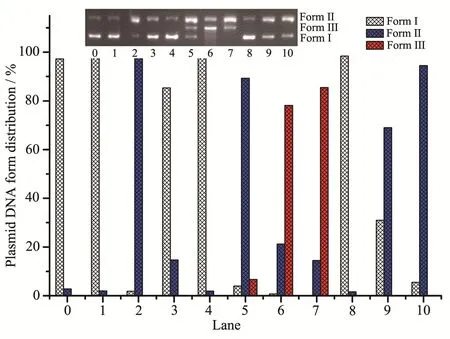
Fig.5 Histogram for cleavage of pBR322 DNA(0.1 μg·μL-1)in presence of 35 μmol·L-1 complex 1 and different inhibitors
As shown in Fig.5,the cleavage activity of DNA was significantly inhibited by the addition of the inhibitors NaN3(Lane 3)and KI(Lane 4),which indicates that singlet oxygen and hydroxyl radical active species may be produced in the reaction process,and the addition of D2O(Lane 5)enhanced the cleavage activity of DNA,producing linear DNA,further demonstrating the existence of singlet oxygen active species[29].In addition,the metal chelating agent EDTA can efficiently inhibit DNA cleavage(Lane 8),indicating metal ion plays the key role in the process of DNA cleavage.Moreover,the addition of methyl green(Lane 9),which is known to interact to DNA at major groove,partly inhibited DNA cleavage by the complex.The result suggests that the complex mainly has interaction with DNA through major groove.
2.4 Cytotoxicity test
The principle of MTT is that succinate dehydrogenase in mitochondria of living cells can reduce exogenous MTT to water-insoluble blue-purple crystal formazan and deposit in cells,while dead cells have no such function.DMSO can dissolve formazan and measure the absorbance at 490 nm by a microplate reader,which can indirectly reflect the number of living cells.MTT method is often used for screening anti-tumor drugs,cytotoxicity test and radiosensitivity test.Cytotoxicity is usually measured by the IC50value.We used the MTT method to determine the inhibitory ability of the complex on the growth of HeLa,BGC-823 and NCIH460 cellsin vitro(Table 2),and the IC50values were(243.27±7.82), (148.54±5.76) and (234.24±7.07)μmol·L-1,respectively.In addition,the cell viability of three cell lines after drug treatment for 48 h by complex have been shown in Fig.6,and the result indicates that the complex is cytotoxic and inhibit the growth of cells in a dose-dependent manner.We found that the ligand itself showed very weak inhibitory effects on three cell lines.The results show that the complex has a certain degree of inhibition on cancer cells,and especially has a significant inhibition on BGC-823 cells.

Table 2 IC50values of complex 1 obtained with different cell lines for 48 h
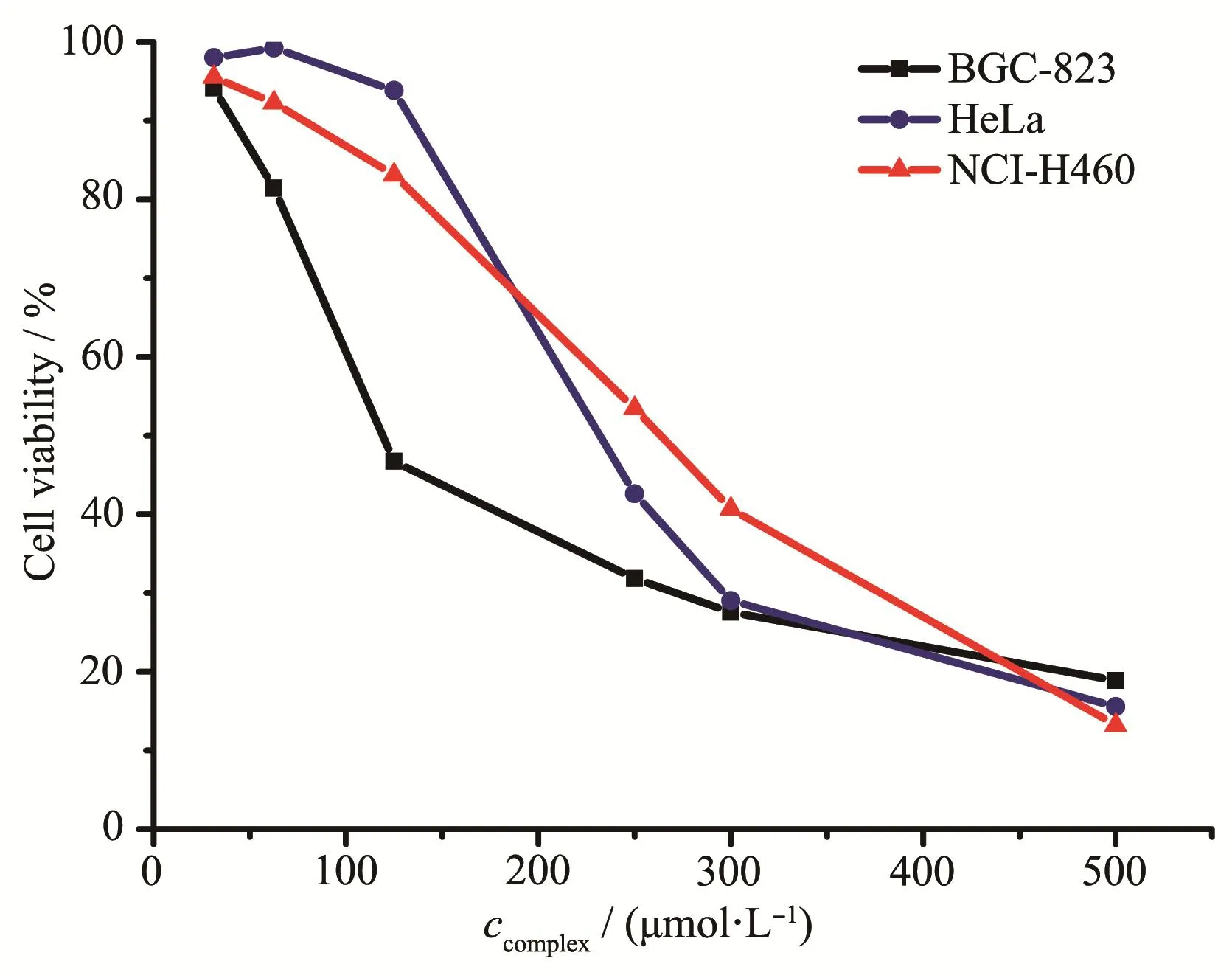
Fig.6 Cell viability of three cell lines(BGC-823,HeLa and NCI-H460)after drug treatment for 48 h by complex 1
3 Conclusions
A new polypyridyl mononuclear Co(Ⅱ)complex was synthesized and characterized using elemental analysis,IR,and X-ray crystallography techniques.The crystal structure analysis reveals that Co(Ⅱ)center of the complex is a distorted trigonal-bipyramidal configuration.Electronic spectra and fluorescence quenching experiments show a moderate insertion between the complex and CT-DNA.The DNA cleavage ability of the complex exhibits evident improvement after the addition of the inducer H2O2.The oxidative mechanism is demonstrated preliminarily via a pathway involving formation of both singlet oxygen(1O2)and hydroxyl radicals(·OH)as active oxygen species.In addition,in vitrocytotoxicity of the drug has been tested by MTT against HeLa,BGC-823 and NCI-H460 cell lines,and the result shows that the complex has certain inhibitory effects on the three cancer cells.
Acknowledgements:This work was supported by Shanxi Key Research and Development Program (Grants No.201703D211001-02-03,201903D221036,201703D221008-4,201703D221004-5),Natural Science Foundation of Shanxi(GrantsNo.201701D221157,201701D221158),the PhD Research Startup Foundation of Shanxi Agricultural University(Grant No.2013YJ40)and College Students Innovation and Entrepreneurship Training Project of Shanxi (Grants No.2019136,2019137).
Supporting information is available at http://www.wjhxxb.cn
